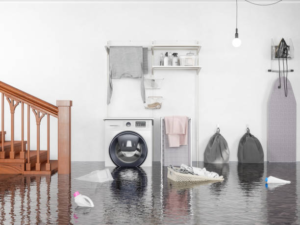
The spring and fall are generally wet seasons across the country. It only takes one good downpour to cause a disastrous flood in your basement. If you live in a flood plain or you have a crack in your foundation, you could end up with a lot of damaging moisture in your basement.
Basement flooding is a serious matter for the damage it can do to carpeting and furnishings, along with the potential for mold and mildew. If you don’t take the right steps following a basement flood, you could end up with long-term problems.
If you find water in your basement, your first call should be to a contractor or inspection company like Northwest Construction Control to take a closer look at your foundation. Let’s take a look at the next steps you should take if your basement floods.
Turn Off the Power
You should immediately cut the power if you have anything other than your sump pump plugged in down in your basement. You are risking an electrocution incident if you have power running through your water in the flooded area. Take care to turn off the downstairs breakers and unplug all appliances and electronics before you do anything else.
Drain Water
Flooding is generally caused by an excess of water that can’t be taken care of by your sump pump. Your priority should be to drain as much water as you can from your flooded basement. Use a shop vac to suck up the water and bucket to bail out the deeper areas. Once you have gotten most of the water, you can use a broom to sweep the rest of the water trickles into the pump reservoir.
Remove Damaged Items
You will likely have some items with water damage after your basement floods. Start by removing all boxes, furniture, and larger items and get them out of the area. Next, you need to remove all rugs and carpeting. You may think that you can dry out your carpet in place, but the reality is that your subfloor is likely wet and damaged as well, and your rug could end up becoming moldy if not adequately dried outdoors or in another area.
Dry Out the Basement
Now it’s time to dry out the rest of the basement. You can use your own or rent a few industrial-size fans to help dry out the rest of the area. It’s a good idea to open doors and windows while you have the fans on. Keep the fans going for at least 12 hours to ensure that the area is completely dry.
Call Your Insurance Company
When you have a flooded basement, you will likely lose some of your items and furnishings to water damage. After you clean up the initial mess, it’s time to call the insurance company. Before you start cleaning, you may want to take some pictures of the water and damaged items that will be included in your claim.
Finding a flooded basement is not something that any homeowner wants to experience; but, it happens. If you end up with water in your basement, follow these tips to help you clean up safely and talk to your contractor about what you can do to prevent any future flooding.


























